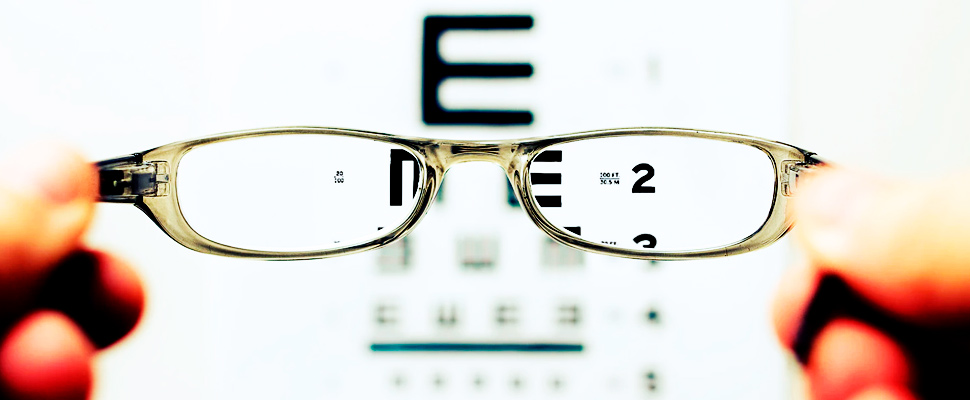Researchers created new glasses to cure myopia in children
Listen to this article
Research scientists in Hong Kong claim they've created new lenses that can certainly stop the development of nearsightedness in children

Nearsightedness affects almost 30 % of the population in the USA. Serious myopia is linked with issues that can jeopardize the vision. On the other hand, there is some good news coming, at least for kids. Eyeglasses that fanatics say are specifically made to slow the development of myopia in kids will be available in the market or eye clinics in the near future.
These lenses, made by researchers at the Hong Kong Polytechnic University, were found to cut back the acceleration of nearsightedness for 60% of the young individuals in a two-year, double-blind, randomized clinical study. Moreover, these lenses completely halted further vision loss in 20% of trial subjects.
Kids who used the lenses also had slower shortsighted development by 60%, and eye light-intensity was minimized by 60%, in comparison with individuals who used single vision lenses. This brand-new product is known as the Defocus Incorporated Multiple Segments (DIMS) Lens.
These DIMS lenses were honored with the Grand Reward, Gold Medal, and Grand Award at the 46th International Exhibition of Inventions in Geneva. DIMS lenses are the creation of Carly Lam, a mentor at the Hong Kong Polytechnic University in School of Optometry, and co-creator Chi-ho To, an educator in elderly vision health.
The scientists made the lens to work like the contacts currently used to slow nearsightedness.
“With these DIMS Lenses, we are now in a position to put in several micro-lenses all over the surface area of the ophthalmic lenses. While the eye revolves around different areas of the lens, the vision still encounters a frequent amount of shortsighted defocuses," said Chi Ho To.
As these lenses are initially expensive and would not in reach of the average joe, some other prescription glasses are available in the market that can also cure the vision. Due to competition, such glasses are offering competitive prices in the market. If you want to save your money on eyewear then buying prescription glasses from Firmoo will be the best move to make. Firmoo sells eyeglasses at almost half the high street prices, thus benefiting the buyer significantly. From, semi-rimless or rimless prescription eyeglasses or conventional fully rimmed glasses to offbeat and stylish glasses, Firmoo has it all. The store also offers different lens types, such as bifocal lenses.
Also read: Learn how to prevent a brain bleeding
Risks of Contact Lenses
Wearing corrective lenses to stop the development of myopia in kids is not new.
Contact lenses have been proven to work to do this for a while. However, they come with health problems, specifically for younger kids.
“Eye care experts usually don’t recommend contact lenses for children until they're twelve or thirteen because the possible risks are frequently greater than the advantages for younger kids. Although age is not the only problem, it is also an issue of maturation,” said Dr. Bernard P. Lepri, OD, MEd, MS, an eye doctor in the FDA’s Retinal Devices and Contact Lens Department.
According to a study released in the journal Pediatric medicine, about one-fourth of the more than 75,000 kids who visit an emergency ward every year for complications and injuries from a healthcare device have problems related to contacts. (FDA Source)
A Need to Stop Short-Sightedness
“It is considered that near-vision stress may induce eye elongation until age twenty,” said Wang. “This may take place any time someone looks at anything closer than six feet, for example, mobile phones, computers, and tablets. Research indicates that time spent outdoors can certainly reduce the risk of nearsightedness, but fewer kids are playing outside the house because they spend increasing amounts of time on electronic products.”
An eye doctor at the Wang Vision Institute in the state of Tennessee, Dr. Nathan D. Rock, says that inherited genes are also a factor.
“The numbers of individuals who are nearsighted are incredible. In the USA, it has already gone up to about 50 % of the population, and right now there tend to be estimations that by the year 2050, half the world’s human population will certainly be nearsighted,” said Dr. David Troilo professor in the State University of New York College of Optometry.
“Research study has been very definitive that nearsightedness has become more prevalent in all heavy technology nations. Countries like Korea and China have even more of an issue than the USA,” Rock said
He also said that this could certainly have critical health ramifications.
“For serious nearsightedness… some people can experience health problems which may steer to eyesight problems similar to that which has age-related changes to the vision,” he said. “Eye patients are at a higher risk of retinal detachments and retinal tears, which necessitate intrusive treatment method.”
Short-sightedness has become a pandemic as lifestyles have been changed. What this means is increasing numbers of people are counting on contact lenses, eyeglasses, and surgical treatment to get better vision. Additionally, it signifies that increasingly more people are having permanent loss of eyesight related to degenerative nearsightedness. Some scientific studies indicate that 40% of individuals who have degenerative short-sightedness will experience vision loss related to intensifying retinal atrophy and thinning in their life. Technological innovation, such as these lenses, which help decrease the development of nearsightedness, can certainly help cut down the occurrence of all these harmful effects.





